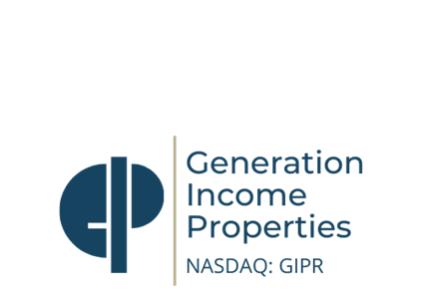The information in this prospectus is not complete and may be changed. We may not issue these shares of common stock until the registration statement filed with the Securities and Exchange Commission becomes effective. This prospectus is not an offer to sell these shares of common stock and it is not soliciting an offer to buy these shares of common stock in any jurisdiction where the offer or sale thereof is not permitted.
SUBJECT TO COMPLETION, DATED JANUARY 8, 2024
PRELIMINARY PROSPECTUS

GENERATION INCOME PROPERTIES, INC.
2,617,446 SHARES OF COMMON STOCK
This prospectus relates to the distribution (the “Distribution”) of 2,617,446 shares of our common stock (the “Distribution Shares”) by Modiv Operating Partnership, L.P., a Delaware limited partnership (“Modiv OP”) to the holders of Class C units of Modiv OP, including Modiv Inc., now known as Modiv Industrial, Inc. (“Modiv”), and the subsequent distribution by Modiv to the holders of its common stock. The Distribution Shares consist of 2,617,446 of the 2,794,597 shares of our common stock issuable upon redemption of 2,400,000 outstanding shares of our Series A Redeemable Preferred Stock, par value $0.01 per share (the “Series A Preferred Stock”), from Modiv OP in a private placement transaction (the “Redemption”). The Redemption is at our option, subject to the satisfaction of conditions set forth in our Articles Supplementary for the Series A Preferred Stock. See “Background of the Portfolio Acquisition” for more information.
We are not selling any securities in this offering, and therefore will not receive any proceeds from the Distribution of the Distribution Shares by Modiv OP, and the subsequent distribution by Modiv.
Modiv OP will distribute the Distribution Shares held by it at a rate of 0.28 shares of the Company’s common stock per share of Modiv common stock and per Class C unit of Modiv OP outstanding (the “Distribution Ratio”) as of 5:00 p.m., New York City time, on January 17, 2024, the record date for the Distribution, which we refer to as the “Record Date,” subject to the beneficial ownership limitations in our charter. The number of Distribution Shares is based on the number of shares of Modiv common stock outstanding as of January 5, 2024, and remains subject to change until the Record Date due to (i) possible increases in the number of outstanding shares of Modiv’s common stock resulting from Modiv’s sale of shares in its ongoing At-The-Market offering and (ii) decreases in the number of Distribution Shares as a result of rounding down for fractional shares that would otherwise be issued in the Distribution. Fractional shares of our common stock will not be distributed in the Distribution and any fractional amounts will be rounded down. The estimated distribution date for the Distribution is expected to be January 31, 2024, provided that Modiv OP and/or Modiv may at any time until the Distribution decide to abandon the Distribution or modify or change the terms of the Distribution, subject to the terms and conditions of the Purchase Agreement (as defined in the “Prospectus Summary — Portfolio Update” section of this prospectus). See “Background of the Portfolio Acquisition” for more information.
By separate prospectus (the “Resale Prospectus”), we have registered the offer and resale by a selling shareholder of up to 177,151 shares of our common stock (the “Resale Shares”), which consists of certain shares of our common stock issuable to such selling shareholder pursuant to the Redemption.
Sales of the shares of our common stock registered in this prospectus and the Resale Prospectus will result in two offerings taking place concurrently, which might affect price, demand, and liquidity of our common stock.
We have agreed to pay the expenses of the registration of the shares of our common stock offered by this prospectus.
Our common stock is currently listed on the Nasdaq Capital Market (“Nasdaq”) under the symbol “GIPR”. The closing price of our common stock on Nasdaq on January 5, 2024 was $3.98 per share.
Investing in our securities involves risks. You should carefully read and consider the “Risk Factors” beginning on page 7 of this prospectus and the documents that are incorporated by reference into this prospectus including our Annual Report on Form 10-K for the year ended December 31, 2022, for a discussion of certain risk factors you should consider before investing.
We qualify as an “emerging growth company” as defined in the Jumpstart Our Business Startups Act and are subject to reduced public company reporting requirements. See “Jumpstart Our Business Startups Act” contained herein.
Neither the Securities and Exchange Commission nor any state securities commission has approved or disapproved of these securities, determined if this prospectus is truthful or complete or passed on or endorsed the merits of this offering. Any representation to the contrary is a criminal offense.
The date of this prospectus is , 2024.

